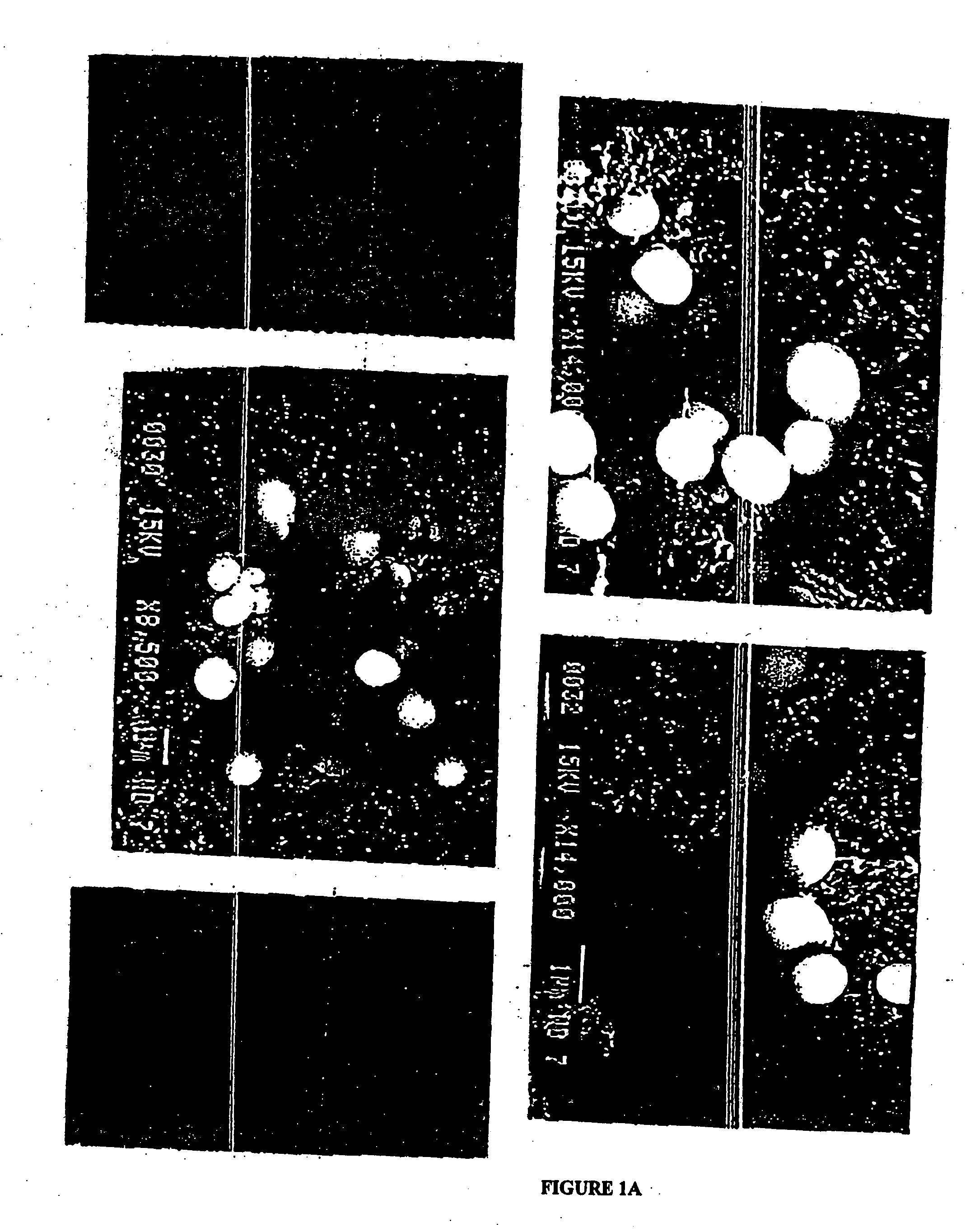Therapeutic calcium phosphate particles and methods of manufacture and use
a technology of calcium phosphate and core particles, which is applied in the direction of aerosol delivery, plant/algae/fungi/lichens ingredients, inorganic non-active ingredients, etc., can solve the problems of inability to manufacture patents that do not disclose the use of calcium phosphate particles, and difficult to make particles of this size with any degree of consistency, etc., to achieve easy transportation, increase the efficacy of vaccines, and the magnitude of immune response duration
- Summary
- Abstract
- Description
- Claims
- Application Information
AI Technical Summary
Benefits of technology
Problems solved by technology
Method used
Image
Examples
example 1
[0089] A 12.5 mM solution of CaCl2 is prepared by mixing 1.8378 g of CaCl2 into 800 mL of sterile GDP water under aseptic conditions until completely dissolved, and the solution diluted to 1 L and filtered. A 15.625 mM solution of sodium citrate was prepared by dissolving 0.919 g of sodium citrate into 200 mL of sterile GDP water with mixing using aseptic techniques and filtered. A 12.5 mM solution of dibasic sodium phosphate was prepared by dissolving 1.775 g sodium phosphate into 1 L of sterile GDP water with mixing using aseptic techniques and filtered. All solutions were stored at room temperature.
[0090] The calcium chloride solution was combined with the sodium citrate solution and thoroughly mixed. Subsequently, the sodium phosphate solution was added with mixing. Turbidity appeared immediately as particles began to form. The suspension was allowed to mix for several minutes and was sampled for endotoxin testing using aseptic technique. Mixing was continued for about 48 hours...
example 2
[0091] An HSV-2 protein solution and an Epstein-Barr virus (EBV) protein solution were purified from ATCC VR-540 (infected tissue culture fluid and cell lysate). The viral suspension was contacted with a lysis buffer (1% IGEPAL CA-630 for HSV-2 and 1% Triton×100 for EBV, 10 mM NaCl, 10 mM Tris-HCL, and 1.5 mM MgCl2), vortexed for 1 minute, incubated on ice for 30 minutes, and centrifuged at 1400 rpm for 2 hours at 4° C. The resulting supernatant was then contacted with a second lysis buffer (1 mM PMSF, 1% IGEPAL CA-630 for HSV-2 and 1% Triton×100 for EBV, 100 mM NaCl, 100 mM Tris-HCL, and 3 mM MgCl2), incubated on ice for 30 minutes, and centrifuged at 1400 rpm for 2 hours. The supernatant was then dialyzed against 2 L of 0.9% saline overnight, lyophilized and resuspended in 1 mL PBS.
example 3
[0092]25 mL of 12.5 mM calcium chloride, 5 mL of 15.625 mM sodium citrate, and 25 mL of 12.5 mM dibasic sodium phosphate solutions were prepared as described in Example 1. The calcium chloride solution was mixed with 1.3 mL of purified HSV-2 protein prepared according to Example 2, which mixing was continued for about 1 minute. 5 mL of sodium citrate was added to the calcium chloride / HSV-2 mixture and allowed to mix for 1 minute. 25 mL of dibasic sodium phosphate was added to the mixture, which immediately becomes turbid, indicating the formation of particles. The mixture is stirred at a moderate speed for 48 to 96 hours, or until the particle size is less than 1000 nm, as determined using a Coulter N4Plus Submicron Particle Sizer, and sonicated. After preparation the particles were stored for approximately seven days before use to allow equilibration of particles to reach size stability.
[0093] The resulting particles, containing HSV-2 protein dispersed therein, can be administered...
PUM
| Property | Measurement | Unit |
|---|---|---|
| diameter | aaaaa | aaaaa |
| diameter | aaaaa | aaaaa |
| diameter | aaaaa | aaaaa |
Abstract
Description
Claims
Application Information
 Login to view more
Login to view more - R&D Engineer
- R&D Manager
- IP Professional
- Industry Leading Data Capabilities
- Powerful AI technology
- Patent DNA Extraction
Browse by: Latest US Patents, China's latest patents, Technical Efficacy Thesaurus, Application Domain, Technology Topic.
© 2024 PatSnap. All rights reserved.Legal|Privacy policy|Modern Slavery Act Transparency Statement|Sitemap



